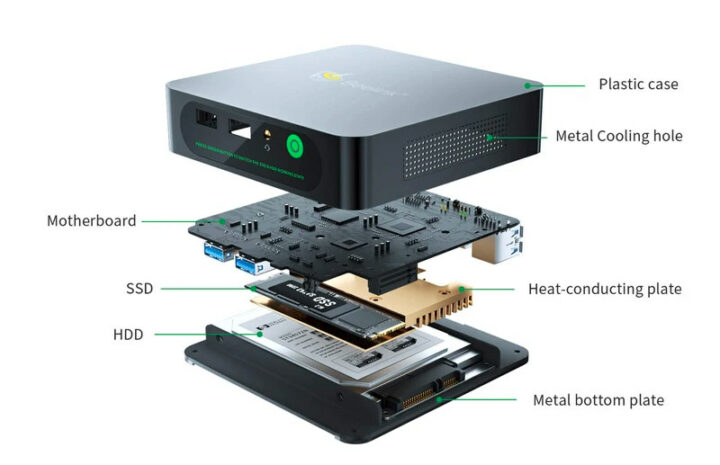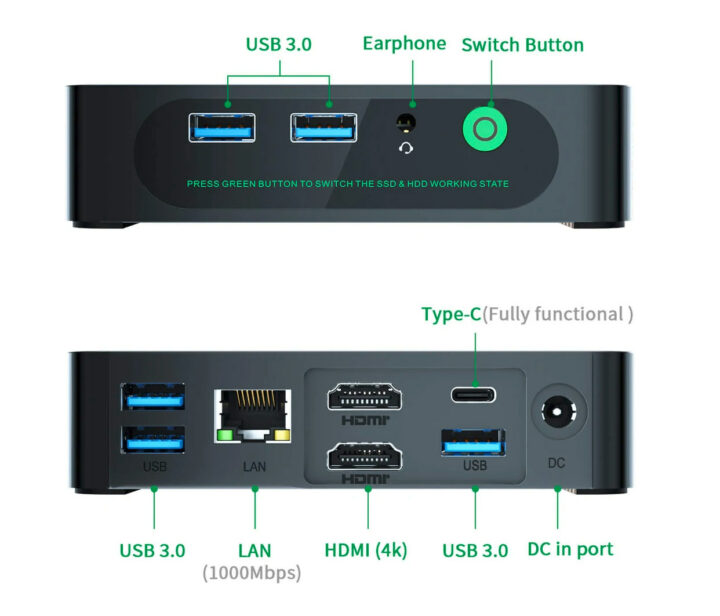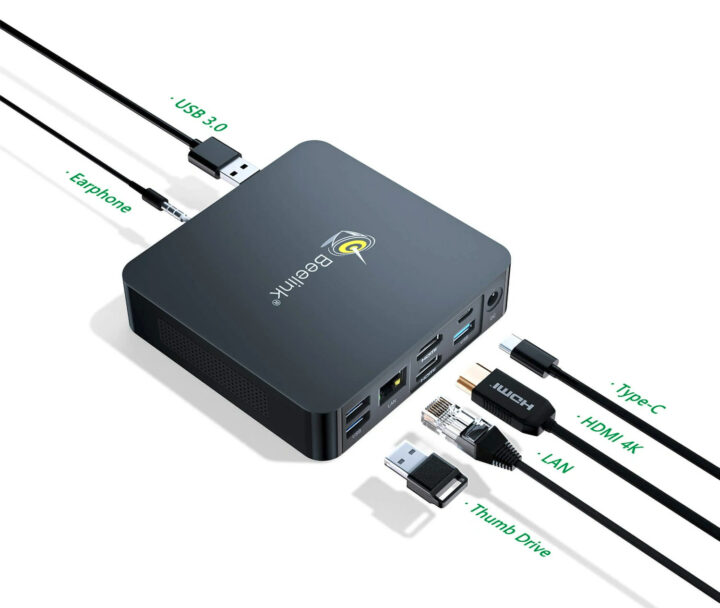Beelink has previously introduced USB docks with the Expand X smartphone dock and Expand M with an SSD. The company’s latest Beelink Expand F USB-C dock looks really like a mini PC from the outside with the usual USB, HDMI, Ethernet, and audio ports, and it can also be fitted with an M.2 2280 SATA SSD and/or a 2.5-inch SATA drive.
It can be useful to add PC-like connectivity to a smartphone or add additional storage to a laptop without cluttering your desk with multiple USB drives, and/or potentially saving some USB ports on the host machine.
 Beelink Expand F specifications:
Beelink Expand F specifications:
- Storage Options
- No storage, i.e. bring your own SATA drive(s) via M.2 socket up to 440 MB/s and/or 2.5-inch SATA bay
- 512GB SATA III M.2 SSD
- 512GB SATA III M.2 SSD plus 1TB SATA HDD
- Video Output – 2x HDMI ports up to 4K resolution
- Audio – 3.5mm audio jack
- Networking – Gigabit Ethernet port
- USB – 5x USB 3.0 ports, 1x USB Type-C port
- Misc – Green button to “switch the SSD and HDD working state”
- Power Supply – 19V DC / 4.74A (90W) via DC jack
- Dimensions – 114.3 x 113.3 x 27.2mm
Beelink lists compatibility with Android, Windows 7/8/10/11, and Mac OS, but I suspect Linux should be supported too since everything goes over a USB-C interface. The very first time I read about the “green button” I switch it was to switch between the M.2 socket and SATA bay, but that’s not the case, and it’s indeed possible to use both drives at the same time. The green button is a power-saving feature that allows you to make the drive enter/leave sleep mode.
Apart from its form factor, Beelink Expand F has another point in common with an entry-level mini PC: its price. The barebone model sells for $149, the one with a 512GB SSD goes for $199, and the version with a 512 GB SSD and a 1TB HDD is offered for $239. All three can be purchased on Beelink online store.
Via Liliputing, AndroidPC.es

Jean-Luc started CNX Software in 2010 as a part-time endeavor, before quitting his job as a software engineering manager, and starting to write daily news, and reviews full time later in 2011.
Support CNX Software! Donate via cryptocurrencies, become a Patron on Patreon, or purchase goods on Amazon or Aliexpress






